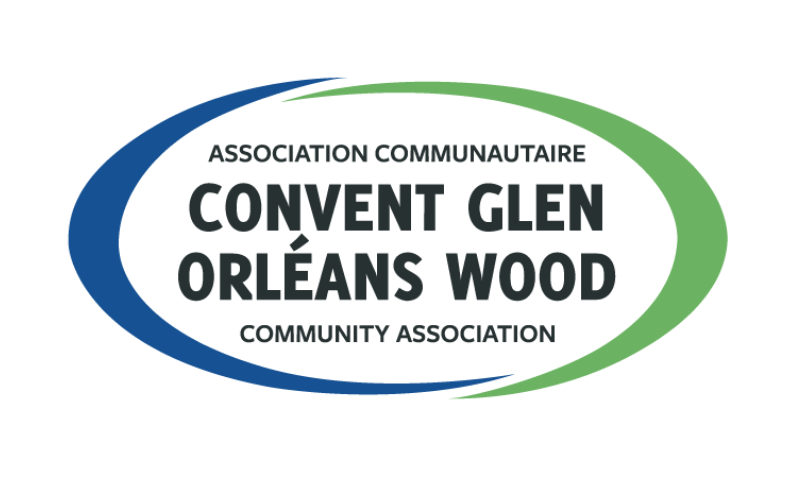Understanding the Threat and How We Can Help Combat Them
by: The CGOWCA Environment Committee

Ottawa is known for its beautiful natural landscapes, however, a growing threat to local biodiversity and ecosystems is the proliferation of invasive plant species. These non-native plants disrupt local habitats, outcompete native vegetation, and pose a serious risk to wildlife. The good news is, we can play a pivotal role in addressing this issue by raising awareness, and taking proactive steps to remove invasive species from our community and our own backyards.
What are Invasive Plants?
Invasive plants are species that are not native to a particular region, but have been introduced (either accidentally or intentionally) and have become aggressive in their growth. These plants spread quickly, often because they have no natural predators or competitors in their new environment. As a result, they crowd out native plants, reduce biodiversity, and negatively affect local wildlife that depends on native plants for food and shelter.
In Ottawa, several invasive plant species are problematic, including:
- Common Buckthorn (Rhamnus cathartica)
Common Buckthorn is an aggressive shrub that grows rapidly and creates dense thickets that outcompete native plants. It is particularly troublesome because it shades out the forest floor, preventing the growth of native vegetation and altering soil chemistry. - Giant Hogweed (Heracleum mantegazzianum)
Giant Hogweed is not only invasive but also dangerous. Its sap can cause severe skin burns and blisters when exposed to sunlight. It spreads easily along roadsides, riverbanks, and disturbed areas, posing a serious threat to human health as well as native plant populations. - Garlic Mustard (Alliaria petiolata)
Garlic Mustard is a fast-spreading herb that takes over forest floors and disrupts the natural balance of ecosystems. It is particularly harmful to native woodland species, as it can outcompete them for resources, altering the forest structure. - Japanese Knotweed (Fallopia japonica)
Japanese Knotweed is a highly invasive plant that grows rapidly in disturbed sites such as riverbanks, roadsides, and abandoned lots. Its dense, bamboo-like stems can damage infrastructure, including foundations, sidewalks, and drainage systems. - Purple Loosestrife (Lythrum salicaria)
Purple Loosestrife thrives in wetlands and has become a significant threat to aquatic ecosystems. Its dense growth can choke out native aquatic plants, disrupt local food chains, and reduce habitat for native wildlife, particularly birds and insects.
Why Should We Care?
The spread of invasive plants in Ottawa threatens not only the beauty of our natural areas, but also the delicate balance of local ecosystems. Native plants play a vital role in supporting wildlife by providing food, shelter, and breeding grounds for insects, birds, and other animals. When invasive species take over, they can reduce food availability for local wildlife, decrease biodiversity, and even disrupt water and soil quality.
Invasive species can also negatively impact human activities. For example, plants like Japanese Knotweed can cause significant damage to infrastructure, while species like Giant Hogweed pose direct health risks to residents.
What Can Community Members Do?
While invasive plant species may seem like a daunting problem, there are many actions that individuals and community groups can take to help mitigate the spread of these harmful plants. Here are some practical steps residents can take:
1. Educate Yourself and Others
Understanding which plants are invasive and how they spread is the first step in tackling this issue. Learn about the invasive species in your area, and share that knowledge with your neighbours, friends, and community groups. Awareness is key in preventing the accidental spread of these plants. Frustratingly, many invasive species are still sold in nurseries and garden centres.
2. Remove Invasive Plants from Your Property
One of the most effective ways to combat invasive plants is to remove them from your own backyard. Start by identifying invasive species on your property, then take steps to eradicate them. Some plants, like Garlic Mustard, are relatively easy to remove by hand-pulling, while others, like Japanese Knotweed, may require professional help or specific methods of treatment.
When removing invasive plants, always ensure that you dispose of them properly. Seal them in black plastic bags and leave them in the sun for at least a week to kill the plant material, then place the bags at the curb for garbage collection on your regular pickup day. Do not place them in the green bin or yard waste, as they can spread and grow in new locations.
3. Join or Support Local Volunteer Groups
Many community organizations and environmental groups in our city, such as the Ottawa Stewardship Council, hold regular invasive plant removal events. These volunteer-driven efforts help remove invasive species from local parks, woodlands, and conservation areas while learning from experts. https://www.ottawastewardship.org/. If you’re interested in supporting or getting involved with a local environmental group in Orléans, please reach out to us, the CGOWCA Environment Committee https://www.facebook.com/cgowca.environment.committee.
4. Plant Native Species
Replacing invasive plants with native species is a proactive way to restore biodiversity in your garden or yard. Native plants are better suited to the local climate, require less water and maintenance, and provide habitat for local wildlife. Local organizations, like the Ottawa Wildflower Seed Library, offer free access to seeds, plus resources on which native species are best suited for our environment. https://wildflowerseedlibrary.ca/
5. Report Invasive Plants to Local Authorities
Many invasive species are found in public spaces, such as parks, roadways, and along waterways. If you spot an invasive plant in these areas, report it to the City of Ottawa or a local environmental group. The city often organizes removal efforts for high-priority sites, and your input can help direct those efforts. City of Ottawa’s online form
6. Avoid Spreading Invasive Seeds and Plant Material
Be mindful of how you manage your yard waste. Seeds from invasive plants can easily spread through compost or by hitching a ride on clothing, gardening tools, or pets. When hiking, biking, or walking in natural areas, brush off any seeds or plant material that may have clung to your clothes before leaving the area.
7. Support Legislation and Policy
Support local and provincial efforts to regulate or ban the sale of invasive plant species. Ottawa is part of the Ontario Invasive Plant Council’s network, which aims to raise awareness and push for policies to prevent the spread of invasive species. Advocacy for stronger legislation can help prevent the spread of invasive plants on a larger scale. https://www.ontarioinvasiveplants.ca/
Together, We Can Do It!
Invasive plants pose a serious threat to Ottawa’s natural environment, but we have the power to make a difference. By educating ourselves, removing invasive species from our properties, and participating in local volunteer efforts, we can help protect Ottawa’s rich biodiversity. Together, we can ensure that our beautiful city remains a vibrant, sustainable place for generations to come. Whether you’re pulling weeds in your backyard or participating in community events, every action counts. Let’s work together to make Ottawa a model for invasive plant management and environmental stewardship.













